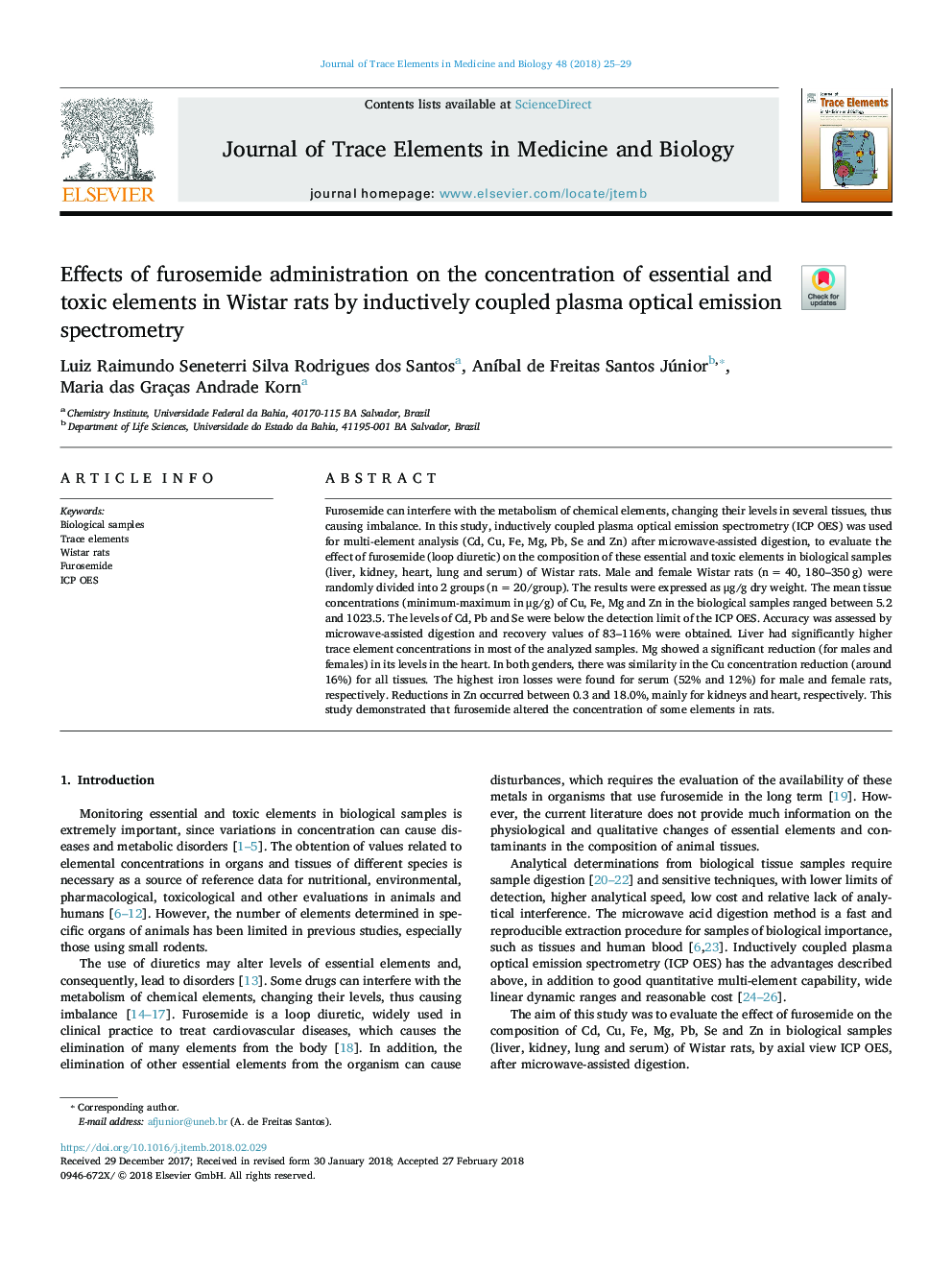| Article ID | Journal | Published Year | Pages | File Type |
|---|---|---|---|---|
| 7638759 | Journal of Trace Elements in Medicine and Biology | 2018 | 5 Pages |
Abstract
Furosemide can interfere with the metabolism of chemical elements, changing their levels in several tissues, thus causing imbalance. In this study, inductively coupled plasma optical emission spectrometry (ICP OES) was used for multi-element analysis (Cd, Cu, Fe, Mg, Pb, Se and Zn) after microwave-assisted digestion, to evaluate the effect of furosemide (loop diuretic) on the composition of these essential and toxic elements in biological samples (liver, kidney, heart, lung and serum) of Wistar rats. Male and female Wistar rats (nâ¯=â¯40, 180-350â¯g) were randomly divided into 2 groups (nâ¯=â¯20/group). The results were expressed as μg/g dry weight. The mean tissue concentrations (minimum-maximum in μg/g) of Cu, Fe, Mg and Zn in the biological samples ranged between 5.2 and 1023.5. The levels of Cd, Pb and Se were below the detection limit of the ICP OES. Accuracy was assessed by microwave-assisted digestion and recovery values of 83-116% were obtained. Liver had significantly higher trace element concentrations in most of the analyzed samples. Mg showed a significant reduction (for males and females) in its levels in the heart. In both genders, there was similarity in the Cu concentration reduction (around 16%) for all tissues. The highest iron losses were found for serum (52% and 12%) for male and female rats, respectively. Reductions in Zn occurred between 0.3 and 18.0%, mainly for kidneys and heart, respectively. This study demonstrated that furosemide altered the concentration of some elements in rats.
Related Topics
Physical Sciences and Engineering
Chemistry
Analytical Chemistry
Authors
Luiz Raimundo Seneterri Silva Rodrigues dos Santos, AnÃbal Júnior, Maria das Graças Andrade Korn,
